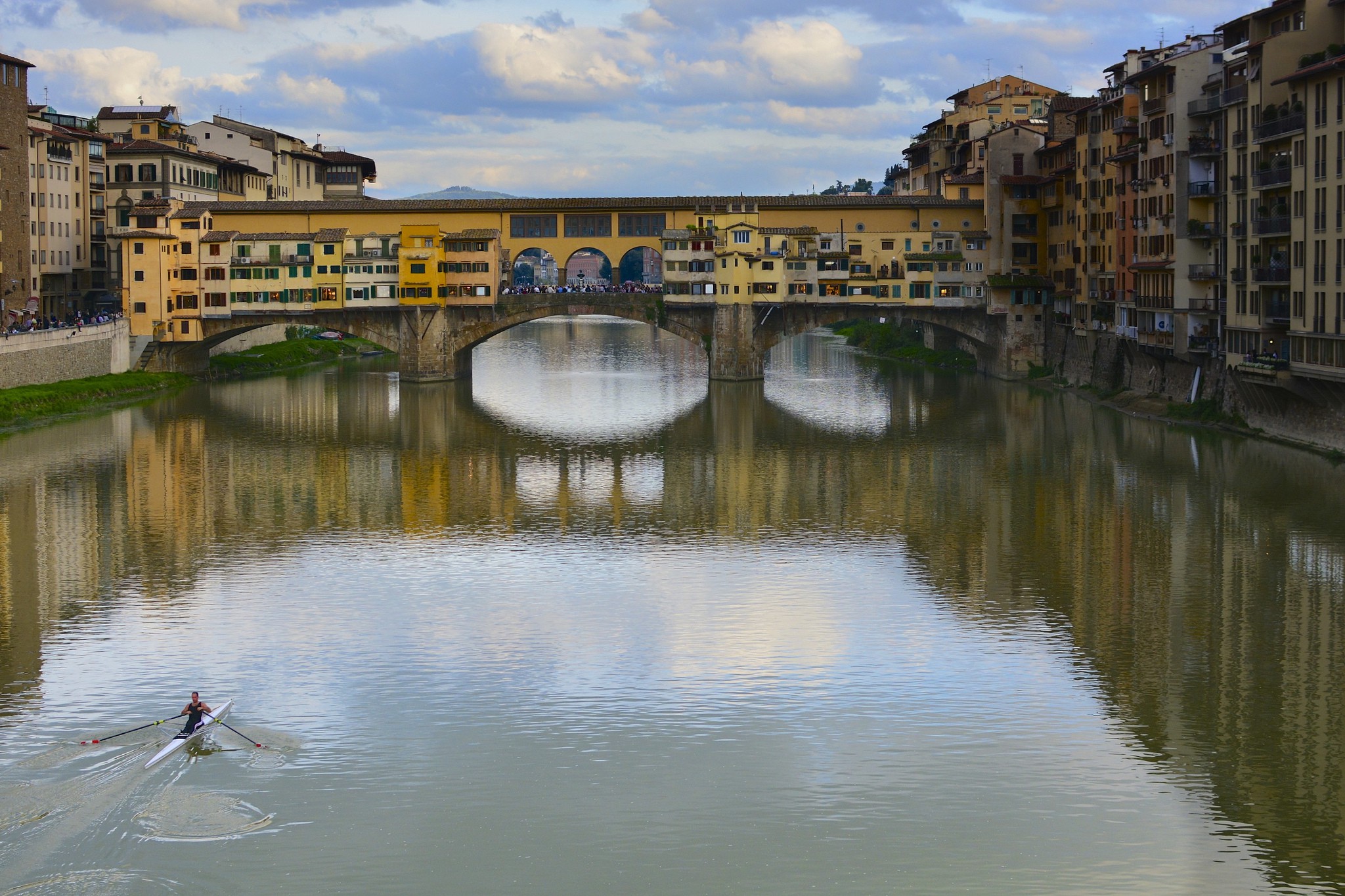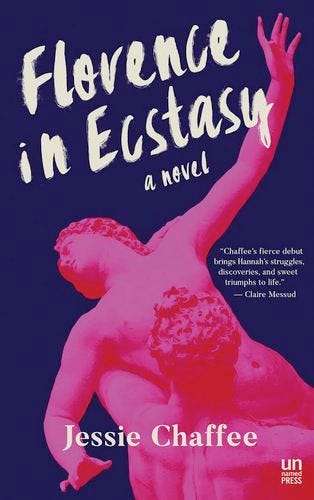Books & Culture
Saints, Demons, and an Isolated Woman
Jessie Chaffee on challenging the stereotypes of eating disorders

Most novels about eating disorders are written for teens and fall into the category of Y.A. These books don’t necessarily dumb down their treatment of the problem, in fact they’re absolutely necessary for the young people who connect with them, however they do present a specific version of a disease which doesn’t only affect adolescent girls. The way that eating disorders and body dysmorphia manifests in adults — who are dealing with the complex demands of an adult life — is a different beast entirely, and one that is generally missing from the literary canon. It’s an odd oversight in a time when our bodies are more exposed and criticized than ever, and it makes Jessie Chaffee’s debut novel, Florence in Ecstasy, feel especially relevant.

Hannah is a woman in her late twenties whose life in Boston has unraveled after a struggle with anorexia and bulimia. When the book opens, she is in Florence, Italy, where she has escaped to deal with, and sometimes avoid, the problem which led her to a profound isolation from her family, friends, and self. I sat down with Chaffee over coffee to talk about the challenges of writing about a place as romanticized as Italy, her research into the history of women depriving themselves of food, and why she refuses to call her narrative a confessional.
Carrie Mullins: Your novel is about a young American woman who has been struggling with an eating disorder. When she leaves her life in Boston, she goes to Florence. Why Florence?
Jessie Chaffee: I have a history with Florence — I studied abroad there in college and have kept going back. When I was beginning the novel, I knew that I wanted to write in some way about a woman who is alienated from her own life, and I wanted her to be an outsider. I chose a city that I knew, but not so well that it was familiar like New York. Also I felt that Florence is a place that is filled with beauty and life and food and representations of women and bodies, so it would be a really interesting place for a woman who is struggling with her body.
“Florence is a place that is filled with beauty and life and food and representations of women and bodies, so it would be a really interesting place for a woman who is struggling with her body.”
And then of course I was interested in the history of women in Florence. When you go to Florence, you hear about the art and artists and the Medici family in big broad strokes, but you don’t always hear about the women in that through-line of history. The women in that past become important to Hannah.
CM: You set yourself an interesting challenge because there is a popular genre in America: an American woman goes to Italy and has some kind of life-changing revelation. Your book nods at that narrative but also disrupts it. Were you aware of that as you were writing, that people would have certain expectations of that story or that they’d romanticize Italy?

JC: I appreciate that question because there certainly is a strong popular history of that, and I did not want this to be a book where the place is the fix, that Hannah shows up and Italy heals her. Italy is part of that but it’s also complicated for women, for her. I got a Fulbright grant to live there for a year, and I spent a year in Florence to do research around the saints, but also to immerse myself in the place and form connections with people who live there, which was really helpful in how the city and the people and the language is portrayed.
CM: That’s awesome. Did you know that you were writing this novel when you got the Fulbright? By the way, I also studied abroad there and I feel like Florence is a hard city because there are so many tourists and everybody speaks English, but I thought that you captured the reality of the city with the actual Italians who live there.
JC: I did. I applied for the Fulbright with this novel. Once I knew that the saints were going to be such a significant part of the book, I realized I had to do more research. It was also really helpful to be there to capture other aspects of the city. As you were saying Florence is so touristed, and it’s easy to remain trapped on the tourist paths, so I also wanted to portray the lives of the Florentines, and some of the more hidden places, like the rowing club.
CM: Can you talk a little bit about what that research process was like?
JC: When I was writing an early scene where Hannah is in the Basilica of San Domenico, she literally runs into Saint Catherine because they have her mummified head there, and finger. There are also images of the saints, Saint Catherine in ecstasy, Saint Catherine looking over a woman who is possessed by demons. Art becomes a mirror for Hannah, a way to reflect on her own life. It becomes a kind of language for her to understand her experience with her body. So when she looks at these images she wonders, who says this woman is possessed by demons? Who says she’s not possessed by God? And which woman am I? When I began to research the saints and read their stories, I realized there were other points of parallel between them and this contemporary woman and her experience with her identity and her body, that it’s about this sort of longer history of women’s struggle for meaning and expression.
How to Suppress Women’s Criticism
CM: You could have written the book without the saints, but they offer an important language for the reader, too. It allows us a different angle to come at what is often trivialized as a women’s problem, or a teenagers’ problem. I really appreciated that this was a book about an adult woman, and not Y.A.
JC: It absolutely was. It is a book about a woman with an eating disorder, but I also hope it will resonate with anyone who’s experienced addiction or alienation from their lives, unhealthy relationships, any of things that cause you to lose yourself, and then you have to figure out how to rebuild from the wreckage. And I wanted to write a book about an eating disorder and I didn’t want it to be about an adolescent. I hadn’t seen literature written about the experience of adults struggling with this, and one thing I’ve realized since writing the book is that at readings, there is always someone, and often more than one person, who comes up to me and talks about their experience with an eating disorder. These are people of all ages and backgrounds, it’s not only women. I think it is a really insidious problem and issues around body image, around eating, across the spectrum. I wanted to challenge some of the stereotypes about eating disorders only being an adolescent disease, as being only about pressures of beauty, and to bring a different perspective. And to think about the longer history of women and eating and denial, and denial as a form of expression. There are a lot of conversations that are important about not wanting to romanticize eating disorders, so that’s also an important line to be negotiated. Part of having the saints in there is that Hannah identifies with them, but ultimately her healing involves rejecting some of what they represent. She understands that they’re gaining power through their extreme behavior but it’s also isolating them.
“I wanted to challenge some of the stereotypes about eating disorders only being an adolescent disease, as being only about pressures of beauty, and to bring a different perspective.”
CM: And isolation is such a theme in the book. I’m interested in your process because Hannah is struggling and much of that happens inwardly. How did you go about depicting her struggle on the page, since you couldn’t just bounce it off of other characters?
JC: Yeah, the disorder that Hannah is dealing with, the experience of it is ultimately isolation from her entire life. There are many novels I admire that really deal with women’s interiority, and spend time inside their minds and bodies and selves, and take on loneliness and what that looks like. So I was reading a lot of Jean Rhys. I think her depictions of isolation even when you’re around other people and being in an altered state are incredibly powerful, and something I was trying to do in my own work.
CM: What does it feel like to you, going from the private to the public writing sphere, knowing that people will read into your work and decide what you’re ‘saying’ about the topic of eating disorders?
JC: It’s a really interesting thing now because I think most writers are expected to be quite public, you’re expected to represent your brand. In some ways it’s at odds with writing, which is solitary. You spend all this time trying to say what you mean on the page and then all of a sudden you’re talking about it in other ways. It’s complicated. When it comes to being in coversation about things in the book, I was concious when I was writing that the issues that I was writing about matter today. They’re part of the political and social conversation, they are people’s experiences. I very aware of what message I wanted the book to have, and it’s why I ended on a hopeful note for Hannah. I’m willing and prepared to be held accountable for that. I think you do the best job you can for your work to be the most authentic representation of what you’re trying to say, because once it’s out of your hands it’s not yours anymore. You can no longer frame it or qualify it; or you can, but people are having their own personal experiences with it.
CM: It’s always going to be tricky — as you said you can’t control what people read into your book — but it does feel like there’s this extra layer for women writers who are writing a female narrative because there is a tendency in literature to decide that’s “women’s writing.” I personally feel this tendency to prove what I’m writing is literature or it’s universal.
JC: I think you’re absolutely right. I mean look, I’ve written a book about a woman in Italy with an eating disorder who discovers women from the past. There are any number of tags in that, which people might take and say this is women’s fiction, this is not something that applies to everybody. So I think the content that we choose to write about is political. I think that choosing to write about women’s interiority in a way that isn’t easy or stereotypical is my way of pushing back.
“Choosing to write about women’s interiority in a way that isn’t easy or stereotypical is my way of pushing back.”
An interesting thing that I didn’t consider while I was writing that I certainly consider now is that it’s more likely for women writing about the interior lives of women, for their work to be considered confessional or navel-gazing, where if a man does it, it’s an incredible representation of the human experience. That made it interesting to address the literature of the saints, much of which is literally confessional and at the same time is this full literature with a capital L. I heard an Italian feminist writer, Dr. Dacia Maraini, speak about the literature of the saints as being left in the convents and out of the canon of Italian literature and I think that’s true. Just as women were left out of the theological canon, where we see men writing about spirituality, I think the same thing happens to women’s writing today.
Renaissance Rebels: 7 Women Saints Who Resisted








